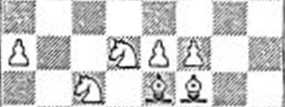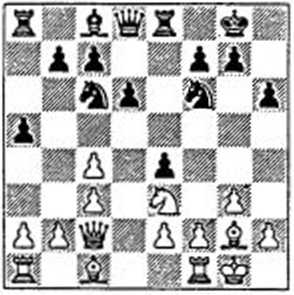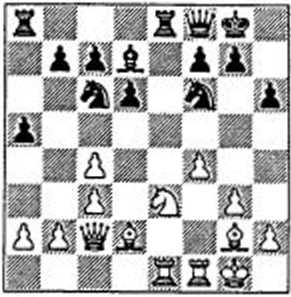Opening Preparation
Mark Dvoretsky and Artur Yusupov
With contributions from:
Sergei Dolmatov
Yuri Razuvaev
Boris Zlotnik
Aleksei Kosikov
Vladimir Vulfson
Translated by Joint Sugden
В. T. Batsford Ltd, London
First published 1994
© Mark Dvoretsky. Artur Yusupov 1994 Reprinted 1994, 1996 ISBN 0 7134 7509 9
British Library Cataloguing-in-Publication Data. A CIP catalogue record for this book is available from the British Library.
Ail rights reserved. No part of this book may be reproduced, by any means, without prior permission of the publisher.
Typeset by John Nunn GM and printed in Great Britain by Redwood Books, Trowbridge, Wilts for the publishers, В. T. Batsford Ltd, 4 Fitzhardinge Street, London W1H0AH
A BATSFORD CHESS BOOK
Editorial Panel: Mark Dvoretsky, John Nunn, Jon Speclman
General Adviser: Raymond Keene OBE
Commissioning Editor: Graham Burgess
sa a
АсЛАП Ж Ж 93 Ж АЖ


То be sure: g2-g4-g5. (He achieves nothing with 13 '®'g3 £c5 14 c5 de 15 fe £fc4! 16 £xe4 £xc4.)
How will Black react to 13 g4 here? The value of 13...d5 14 e5 £c4 is questionable, but I3...e5 is altogether bad in view of 14 £f5 (with tempo) and then 15 g5 - Black has no time for the counter-stroke ...d6-d5.
However, Black can first attack the white c-pawn with 13...£c5!, proceeding only after 14 Af2 with 14...d5 15 e5 £fc4 or 14...e5 15 £f5 d5.
Vassily Smyslov is an experienced and careful player, and will not allow this.
13 Af2!
Now, with the c-pawn (and the e4 square) securely guarded, White is threatening g2-g4. How should Black counter this threat?
13...£c5 prevents the immediate g2-g4, but Black has to reckon with 14 b4 £cd7 15 g4. White achieves his aim, albeit at the cost of weakening his queensidc.
What other resources does Black have? Ln 1979,1 analysed this position with Platonov. He suggested the reply 13...5fe8, quite a clever move typical of Sicilian positions; it is now recommended in opening manuals. If 14 g4, then 14...e5! follows with great effect, since on 15 £15 Black has cither 15...d5! (the bishop on c7 is defended) or 15...cf 16 g5 £c5! (Abramov-Akopov, corr. 1981).
However, Platonov’s move also has a major snag: the square c8 may be needed for the knight. White secures the better chances with 14 c5!.
Thinking on these lines, I arrived at a fairly original solution - 13...g6!?. Depriving the white knight of the f5 square, Black prepares 14,..c5. If White plays 14 c5 himself, Black retreats to e8 either at once or after exchanging pawns. From e8 the knight will later go to g7. Opening the centre like this can hardly be good for White. Black seems to me to have a good position.
As you can see, logical analysis, taking some standard concepts as its starting-point, made it possible to probe deeper into the nature of the position and even to unearth some new ideas (which await confirmation in practice, of course).
Hon played superficially, and soon came under a strong attack.
13 ... Sac8?
14 g4!
Black’s knight will now be driven away from f6. Hort frees the d7 square for it, but the result is merely a loss of time. He should have resigned himself to retreating to c8.
16 Sdl
Threatening 17 b4 Qb3 (17...£id3 18 Sxd3) 18 2)de2.
A moment ago, those were normal Sicilian knights - look where they are now! Relying on the sturdiness of his centre, Smyslov quietly improves his position and prepares his pieces for the attack.
|
17 |
ДеЗ |
£c6 |
|
18 |
*g3 |
Sfe8 |
|
19 |
Д?2 |
ДС8 |
|
20 |
Sf2 |
Another typical Sicilian move, fortifying c2.
20 ... &d7(18)
18 W

21 Qf3!
Black is in a cramped position, so Smyslov avoids exchanging. At the same time he has a specific design: h2-h4, followed by bringing the knight to g4 via h2. High-class play!
After this. White's knight reaches g4 straight away.
24 Ad4
Threatening 25 4ih6+.
If 25...dc, then 26 ДеЗ with a
clear plus.
It was essential to exchange the dangerous knight on g4. White now finishes the game with a combination.
|
27 |
Дхе5 |
de |
|
28 |
Qf6+ |
ФЬ8 |
|
29 |
Qxh7! |
Se6 |
On 29...ФхЬ7, White has the decisive 30 g6+.
30 Sxf7 Дс5+
31 ФЫ Sc7
32 Zf8+ 1-0
An excellent win by Vassily Smyslov. Its foundation was laid in the opening, when Black didn’t manage to counter White’s flank attack (g2-g4) with the standard counterblow in the centre.
In the examples we have seen so far, it was possible to come to the right decision merely by skilfully applying a well-known opening stratagem. But often you have to take into account some much more delicate and less obvious details of a position. New games played with the relevant system contribute their arguments to the unceasing theoretical debate, and it is hard to do without studying them.
The following quiet variation of the English Opening was at one time
|
highly popular: | ||
|
1 |
c4 |
e5 |
|
2 |
ФсЗ |
£f6 |
|
3 |
£f3 |
Феб |
|
4 |
g3 |
ДЬ4 |
|
S |
£g2 |
0-0 |
|
6 |
0-0 |
e4 |
|
7 |
Фе1 | |
|
Until |
fairly |
recently it was |
|
thought |
that the |
sharper 7 ^g5 |
promised White nothing. But this view changed when World Champion Kasparov played the move in his match with Karpov at Seville (1987) and then in the 1988 USSR Championship against Ivanchuk.
7 ... ДхсЗ
8 de h6
Black usually prevents White from advantageously exchanging his queen's bishop for the knight, which would weaken the c4-pawn.
9 Фс2 Se8
10 ФеЗ d6
11 tfc2 aS (19)
19 w

Black’s last move, though not obligatory (theory recommends the cautious I I...b6), is quite popular. It was this move that Korchnoi selected in his 6th World Championship game against Karpov (Baguio, 1978). Karpov obtained nothing from the opening, and the game continued: 12 a4 Wc7 13 Gki5 Фх<15 14 cd ФЬ8 15 ДеЗ Д£5 16 h3 2>d7 17 c4 b6 18 Vc3 Фс5 19 b3 Wd7 20 ФЬ2 2e7 21 £d4 f6 22 Eacl WeS 23 й'еЗ 'A-’A.
World Championship games, even colourless ones like that, always stimulate further developments in opening theory. Grandmaster Wolfgang Uhlmann worked out a promising plan for White and employed it with success. Let us first try to judge for ourselves what White should be aiming for here.
White has the two bishops. But at the moment there is no ’advantage of the bishop pair’, since their mobility is restricted. To open the game, to give the bishops freedom - this is White’s chief task. If an exchange of knights takes place on d5. White can afterwards advance c3-c4 and place his queen’s bishop on the long diagonal. But what about the king’s bishop? The black e-pawn which is impeding it will have to be removed with the aid of White’s f-pawn.
Karpov didn’t even try to solve the problem of his light-squared bishop. Uhlmann played much more energetically.
Uhlmann-Osmanagid Detin 1979 (from Diagram 19)
12 £d2 We7
13 f4! ef
In such positions it is dangerous to refrain from taking on f3; White would play f4-f5, restricting the black queen’s bishop, and prepare a pawn advance on the kingsidc. Uhl-mann gives this variation: 13..JLd7 14 £d5 £xd5 15 cd W, and now that the knight is far away from c5 White can continue with 16 f51. If 16...f6, White has the strong 17 ДеЗ with Sf4 to follow, while if Black plays 16...c3, the pawn is bound to fall after 17 Дс1 and Sf3. White has a clear advantage.
14 ef £d7
15 Sael «18
16 f4 (20)
20 В

This is the formation that L'hl-mann has been aiming for.
The bishop is now exerting strong pressure along the hl-a8 diagonal. The white knight will sooner or later go to d5, and after the exchange on that square the other bishop will come into the game. Then the white kingsidc pawns will advance. Meanwhile Black will have no counter-play at all. His knights arc deprived of central outposts. White is playing to win without taking the slightest risk.
16 ... 2ab8
17 «d3 &e7
18 h3
In such cases Nimzowitsch said that White had a 'qualitative majority* on the kingsidc, meaning that die white pawns could march forward while the black ones could not.
18 м. Дсб
19 €ld5
Of course White refuses to exchange his light-squared bishop.
19 ... £exd5
20 cd Sxcl
21 Zxcl Де8
22 b4!
A slight departure from the plan we have been discussing. White probes on the queenside for good measure, seeking to create chances for active play there. He aims to obtain a passed pawn after the exchange on b4, and to pressurise the backward pawn on c7.
22 ... ab